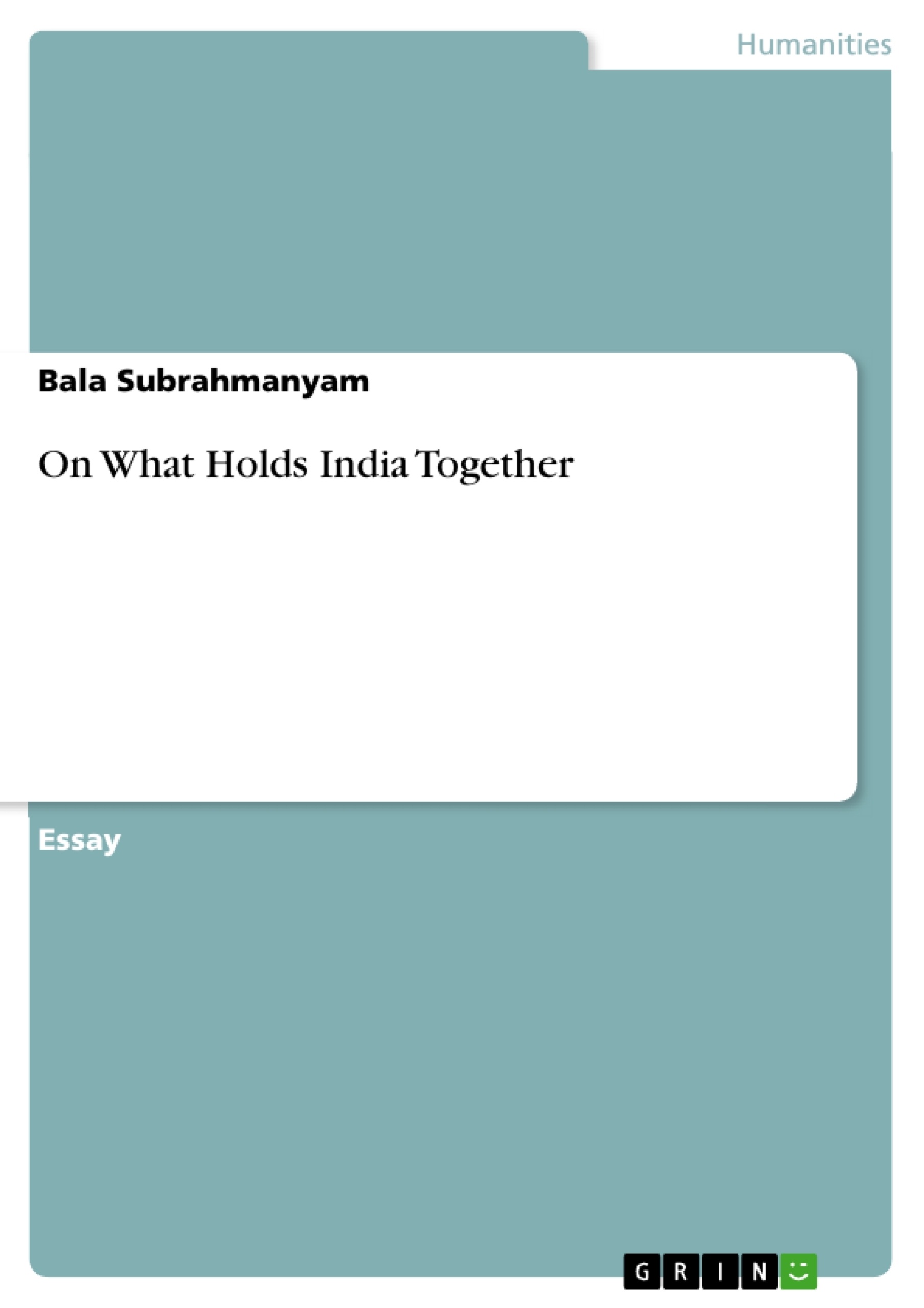Excerpt
Indian society, throughout its history, has been a prime example for Multiculturalism and peaceful co-existence of diverse populaces. This has not been an accidental phenomenon but a deep rooted historical reality. The discourse on Multiculturalism gained momentum in the backdrop of Globalization, Post-modernism and growing multiracial societies in the west. This is exactly where India, a traditionally multicultural society, has something to contribute to this discourse. The experience of India as a multicultural society and its sustained pluralism in socio-political aspirations can serve as precursors for the discourse on multiculturalism and its challenges. Thus an inquiry into the binding force or forces which held the multicultural strands of Indian society together, successfully for such long periods of history, would certainly help the discourse on multiculturalism and its challenges. On the other hand, at this historical juncture, it is essential to recognize the embedded strengths of Indian social milieu to emerge as a global power with appropriate social adjustments. Hence, this paper attempts to understand and appreciate the factors which helped India to remain as a predominantly multicultural society.
Foundation for Cultural Plurality
Even a cursory digression into ancient Indian History, despite variations in available theories of historiography, shows us that the most important event in social history of India is the formation of heterogeneous society by Aryan and Non-Aryan tribes coming together after long wars were fought. This lead to a new socio-economic order founded on crystalized Varna system. Till then the Aryan communities had threefold varna system and the Non-Aryans joined as the fourth varna, i.e., as the Sudra. There was a need to explain this new social phenomenon and thus we find such explanations in theories of creation in Rig-veda and especially in Purusha Sukta1, which certainly belongs to the later strata of Rig-vedic hymns. What is striking about Purusha Sukta is its functional-organic analogy wherein the four varnas were said to have emanated from different limbs of Brahman, depending on respective social functions. Purusha Sukta certainly presupposes prior existence of the four varnas in the newly emerged heterogeneous social order.
The immediate outcome of this new order was rigidity of varna and total loss of internal mobility which Aryan communities earlier had among Brahmanas, Kshatriyas and Vaisyas. This rigidity of varnas and subsequent
sub-castes had helped the tribes to freely retain their identities, safeguard their genetic traits and practice their respective religious and cultural lives.
New tribes joined the society, took up various professions and enhanced the heterogenic feature of the society.
An Encompassing Religious Umbrella
The second great consequence of the new order was evolution of Hinduism in contrast to the Vedic religion. Hinduism incorporated into its fold probably all the religious practices in vogue to emerge as an encompassing inclusive religion. The spectrum of diverse religious practices and rituals reminiscent even to the present day vouch for this inclusive nature of Hinduism. The heterogeneity embedded in Hinduism guaranteed the adjoined tribes to retain their cultural identities. The adhered polytheism in Hinduism offers freedom to continue worship of gods and goddesses of their choice and still be in the fold of Hinduism. Thus we have wide spectrum of devotees who propitiate gods ranging from trees, snakes, local goddesses, mythological gods, yonis to the generally accepted trinity. The modes of worship also range from animal sacrifice to yajnas, encompassing divergent modes in between. The diversity of religious practices within Hinduism is so impending that it defies Hinduism its identity as a uniform religion and many scholars went so far as treating Hinduism as a way of life rather than a religion. This inclusive feature of Hinduism provided surest foundation for multicultural cohesiveness of Indian society by inheriting tolerance for other modes of worship and divergent ritualism.
Codifying Social Unification
The role of ancient law-codes cannot be undermined in providing a platform for organization of multifarious interests of heterogeneous communities into a well-woven socio-legal order. It is true that in doing so, the Smriti literature accords privileges to certain sections of the society and betrays a discriminative orientation. However, we would be able to appreciate the task of law-givers only when we take into account the historical fact that the Aryans were victors and, as in all the other societies, naturally sought privileges over the conquered. Given the prevalence of Apartheid even up to late decades of 20th Century, we cannot expect equality in opportunities in such a remote past. This is neither to sympathise with the law-givers nor to advocate perpetuation of such social discrimination, but is only to understand the positive role of Smritis in their own historical settings. Further, these law-codes were never executed in toto and fortunately, the rulers in India always had resilience to be rational rather than dogmatic. However, the Smritis certainly had their sway in resolution of socio-legal conflicts by envisaging a well-knitted social order.
What is more important is to locate emergence of concepts like justice , social duties, mechanisms for administration of law, etc., in the Smritis, which strengthened the prevailing social order. For example, Manu rightly treats justice as context bound and also depends on the strength and knowledge of the offender: “Having fully considered the time and the place (of the offence), the strength and knowledge (of the offender), let him (the king) justly inflict that punishment on men who act unjustly..”2
The Smritis have insights to offer into how the heterogeneity of a society could be sustained, despite conflicting interests of the constituent groups. A thorough analysis of the law-codes from this perspective certainly supports the attempts to understand modes of conflict-resolution in pluralistic societies in general.
- Quote paper
- Bala Subrahmanyam (Author), 2013, On What Holds India Together, Munich, GRIN Verlag, https://www.grin.com/document/270616
Publish now - it's free






















Comments